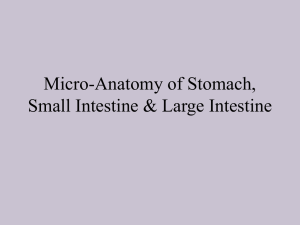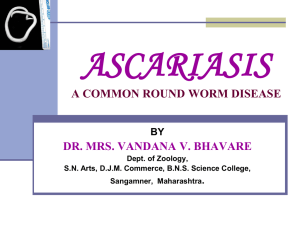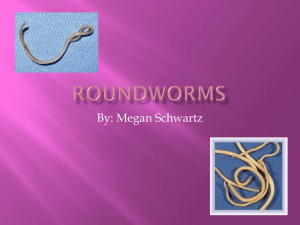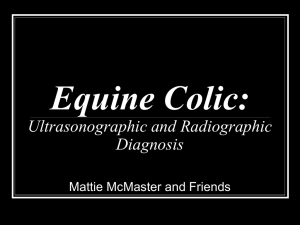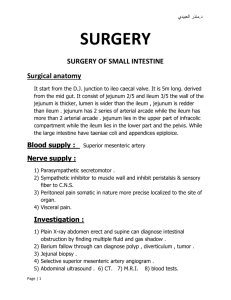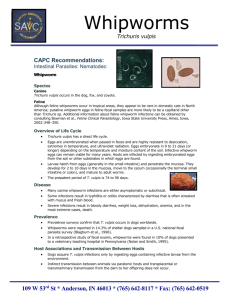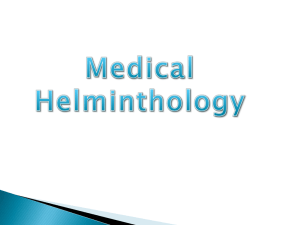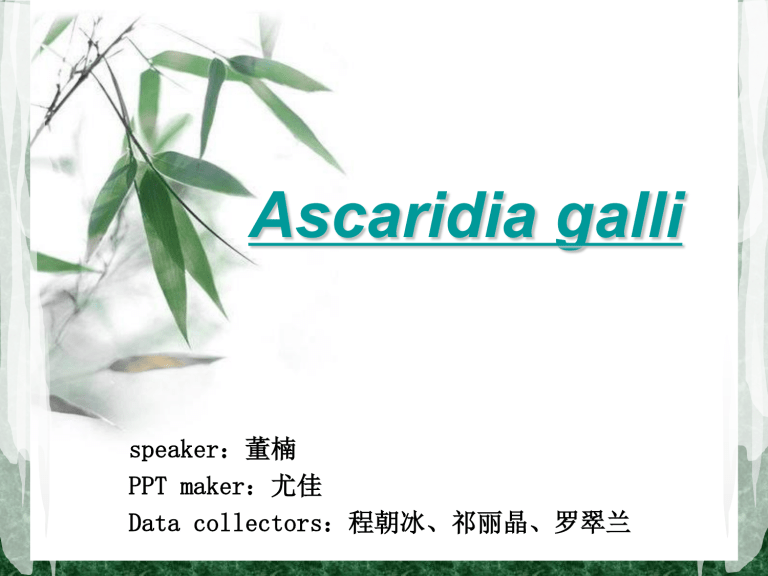
Ascaridia galli
speaker:董楠
PPT maker:尤佳
Data collectors:程朝冰、祁丽晶、罗翠兰
contents
1.Instroduction
6.Lesions
2.Morphology
7.Diagnosis
3.Life cycle
8.Treatment and Control
4.Epidemiology
9.References
5.Symptoms
Introduction
Ascaridia galli is a parasitic roundworm(寄
生蛔虫)belonging to the phylum Nematoda
(线性动物门).
Nematodes of the genus Ascaridia(禽蛔
属) are essentially intestinal parasites(
肠道寄生虫)of birds.
A. galli is the most prevalent and
pathogenic species (致病性), especially in
domestic fowl (鸡).
It causes ascaridiasis, a disease of poultry
(家禽) due to heavy worm infection,
particularly in chicken and turkeys (火鸡).
分布
东北
华北
华南
华东
西南
back
Morphology
头部顶端
a prominent mouth
which is surrounded
by three large trilobed lips.
Anterior end
(前端)
There’s 2
ventral lip(侧腹
唇),
esophagus(食道),
nerve ring(食道
环)
Posterior end
of female
(雌虫尾部)
Anus(肛门) at
the end of the
worm
Posterior end
of male
(雄虫尾部)
10 Sex papilla(性
乳突)
There is a preanal
sucker(肛前吸盘)
Before coacal
pore(泄殖孔)
Life cycle
The development from egg to
adult infectious need 5~8
weeks.
Adult life span of about 1
years
Adults Parasite in the
stomach or small intestine
Occasionlly ,earthworms
become into storage host with
swallowing their eggs
Infective eggs
Eggs containing infective larvae
Stomach(胃) or
Back
the
small to
intestine(小肠)
Duodenum
intestine(返
回肠腔)
Development
(十二指肠)
To be adult
Developmenttime(发育一段时间)
for some time
适宜环境:
into the intestinal mucosa
(成为成虫)
3周时间发育成含幼虫的感染性虫卵
(进入肠黏膜发育一段时间)
Epidemiology
Ascaridia galli infection occurs in the rearing
chickens, and the chickens kept in cages Is less
common.
The nematode infects fowl of all ages, but the
chickens at three months of age is most
susceptible and the disease is more serious .
Symptoms
Heavy infection is
2
the major cause of
weight depression
and reduced egg
production
In severe infections, intestinal blockage
can occur. Unthriftiness, drooping of the
wings, bleaching of the head
and emaciation. It also causes loss of
blood, reduced blood sugar content,
increased urates, shrunken thymus glands,
retarded growth and greatly
increased mortality.
in poultry
husbandry.
1
In heavy infections, adult worms may
3
move up the oviduct and be found in hens'
eggs, and sometimes they are also found
in the birds' feces.[11]
Lesions
At early phase of infection, the
intestinal mucosa of chicken
always appear bleeding or
hyperaemia(充血、出血) and
edema(水肿).The larva(幼虫)
forms parasitic tubercle in parasitic
location, even arouse intestine
rupture(肠破裂), peritonitis (腹膜
炎). By cutting intestinal tract, a
large amount of parasites can be
discovered.
出血性肠炎 虫体聚集阻塞肠管
Depression(精神沉郁)、pale mucosa(黏膜贫血苍白)
Disheveled feathers(羽毛蓬乱)、Dysplasia(发育不良)、
Slow(行动迟缓)
顽
固
性
下
痢
Diagnosis
Definite diagnosis :
floating method with saturated salt
solution (饱和盐水浮集法)
or discovering large number of the
parasite(虫体) when cutting the small
intestine (小肠)at autopsy(剖检)
根据粪便中发现虫卵或剖检时在小肠内发现
大量虫体
Treatment and Control
1、Treatment :
praziquantel(吡喹酮)
albendazole(丙硫苯咪唑)
Fenbendazole(芬苯达挫)
2、Comprehensive prevention(综合性预防
措施):I
Regular de-worming
Improvement of breeding and management
.
Improve hygiene and the resistance
Harmless disposal of feces
References
李国清.兽医寄生虫学(双语版).北京:中国农业大
学出版社,2006
辛朝安.禽病学(第二版).北京:中国农业出版社
Ackert, JE (1940). "The large roundworm of
chickens". Vet. Med. 35: 106–108
Ashour, AA (1994). "Scanning electron
microscopy of Ascaridia galli (Schrank, 1788),
Freeborn, 1923 and A. columbae (Linstow,
1903)". J Egypt Soc Parasitol 24 (2): 349–55.
Thank you!


